How to build trust in your marketplace
Tactics to increase trust between your providers and customers – and to boost transactions.
Published on
Last updated on

This chapter of the How to create a marketplace guide takes a closer look at one of the most crucial components of a sustainable marketplace business: trust. Also available as a podcast.
One of the biggest problems marketplace businesses need to tackle is fear. Whenever customers and providers engage in transactions, multiple sources of anxiety emerge.
What if I make a payment, but the provider never delivers the product?
What if I rent my surfboard to a stranger and they break it by accident?
What if this website leaks my credit card details to hackers?
If these fears are not tackled in some way, they will prevent transactions from happening.
To address these fears, you need to bake marketplace trust into your user journey. Your users need to trust your platform and each other. In this article, we will go through the most common ways to build trust in a marketplace community.
To understand what type of marketplace trust mechanisms you need, you first need to understand the type and size of your users' perceived risks. These risks can be real or imaginary.
The amount of perceived risk varies widely depending on the type of marketplace. Daan Weddepohl, co-founder of neighborhood sharing marketplace Peerby, used to say that "Trust is overrated". His users were able to trust each other without any specific trust or safety mechanisms.
However, the reason this was possible is that the perceived risk for Peerby users was likely minimal. Peerby's user base was still relatively modest, which meant they were not an interesting target for scammers. Peerby mainly dealt with lending low-value items (like power drills) for free. There was no monetary transaction involved, which already helped—people are always warier when they need to spend money. The worst thing that could happen is that someone breaks your drill and refuses to pay for it, but even then, the loss is minimal. Peerby started their operations from Amsterdam, a relatively safe city, and their early adopter users were young "hipsters" who, in general, were eager to trust their peers.
From this example, we can gather the most common things that affect the size of the perceived risk.
- How many users do you have? As Boris Wertz and Angela Tran Kingyens note in their marketplace handbook, the need for trust-building typically grows with the size of your marketplace. Bigger platforms are more likely to attract bad actors.
- What is the worst-case scenario? What is the worst thing that can happen? Losing 15 minutes of your life because you got stood up by a random person from a Facebook flea market is not a big problem. Hiring an incompetent caretaker, which may result in considerable risk to your loved one, is.
- How much money is involved in an average transaction? This is related to the previous point. If you buy a used t-shirt online and never receive it, the situation is annoying, but not as bad as if you buy a used car that you never receive.
- How trusting are your target users? Our non-scientific hypothesis is that people in Western countries are, in general, more eager to trust their peers, while older people or people in emerging markets are warier. The Sharetribe founders learned this first-hand when they launched a campus sharing marketplace in Finland and then tried to do the same in Chile. In the former, the response was excited and free of trust issues. In the latter, people responded with: "Are you crazy? I can't trust my peers enough to share with them."
Now that we know which factors you should pay attention to, we can start investigating the different tools marketplaces use to build trust.
Building a marketplace trust mechanism is a process of evolution. The mechanism that is needed in the early days is different from the one needed when you achieve scale. Ridesharing company BlaBlaCar has gone through this process and studied the topic extensively. In cooperation with sharing economy researcher Arun Sundararajan, they even published a small e-book on the topic of trust. In this section, we will introduce the different phases for building trust, moving from the early days to trust at scale.
The first thing you want to do is establish a set of rules on how things work on your platform. This is quite easy and something we recommend having in place from the very beginning.
For instance, BlaBlaCar has guides on how to be a good driver and how to be a good passenger. This sets the expectation level of the users: as a driver, I should take care of the comfort of my passengers, while as a passenger, I should not cancel at the last minute. If everybody plays by the same rules, transactions will happen smoothly. Airbnb has a similar standards document.
In some cases, a set of rules is all you need to create a basic level of trust. This is what happens in the many local trade groups on Facebook. Facebook does not offer any specific tools for building trust, so administrators of these groups often create an elaborate set of rules. You should not overdo the rules, though—in many of these groups, problems arise from rule sets being too complicated, which leads to people forgetting about them.
In an interview, BlaBlaCar's co-founder Vincent Rosso told us BlaBlaCar's entire strategy is built around trust. To build trust, one of the first things BlaBlaCar did was to put effort into convincing the users to share information about themselves. As CEO and founder Frédéric Mazzella explains:
– Users like to see and read the info, but they are not willing to tell a lot of things about themselves (bio, picture, preferences). It's not that they don't want to share their information, but it's not their goal. Their goal is to travel safely, but they don't see the point of saying who they are. You need to make them understand why it's important.
BlaBlaCar users are asked to use their real name and a photo with their face clearly visible. Every user has a profile page, where they are asked to describe who they are.
Some marketplaces take this even further: instead of a free text description, you are asked a set of questions you need to answer. This is a nice way to get people to add more detailed information about themselves. The more details there are in your profile, the easier it is for others to trust you.

When I started using Wallapop—an app to buy and sell stuff with nearby people—I was surprised about the lack of a reputation system (a heavier trust mechanism that we're going to discuss later). How could I trust other users? Some days later, when I used the app to buy a bike for my kid, I realized the main element to foster trust between sellers and buyers was the chat system. After finding an item you want to buy, you chat with the seller to figure out if the item is what you are looking for and agree on the price. Not having a reputation system was not a problem for the early adopters—after chatting with the seller, they felt secure enough to meet them at a nearby location and buy the item. Since then, Wallapop has grown tremendously and nowadays has a reputation system, but just like with Peerby, the initial lack of such a system was not a barrier to entry.
People typically fear the unknown. If they do not know the other person at all, it increases fear. A simple way to help people trust each other is to offer them a low-key communication channel. This is why most peer-to-peer marketplaces offer their users an internal messaging system they can use to have a chat before actually engaging in a transaction.
As we noted earlier, people fear the unknown. But is the other person really a stranger? After all, we are all connected to each other. If you can make these connections visible, it makes it easier for people to trust each other.
Airbnb did this in a clever way by introducing social connections. By using data from Facebook, they allowed people to filter listings based on common friends with the host. I might travel to Paris and note that a friend of a friend has a flat there. While I do not know this person directly, I immediately trust them more because of our mutual connection. I know, at least, that they are a real person, and if I want further proof of their trustworthiness, I can ask my friend.
If we do not share any mutual Facebook friends with another user, how can I know they are who they say they are, or even a real person? After all, on the internet, nobody knows you're a dog. There are no absolutely foolproof methods for identity verification, but there are several options you can do to decrease the probability of fraud.
The most basic verification is email validation. Practically all websites that allow their users to create an account use this verification method. However, creating a fake email account that cannot be tracked to any individual is easy, so this step is not enough.
The next most common step is phone number validation. Typically, this is done by sending an SMS with a code to the phone number provided by the user, which then needs to be entered into the service to verify that the user owns the number. eBay uses a system that automatically calls users' phone numbers to verify their identity. However, prepaid phone subscriptions are quite common, so this method is also not enough to reveal the identity of the user.
Verifying social network accounts is often useful, even without having mutual connections. Seeing that the other user has 200+ friends on Facebook means that it is likely not an entirely fake account.
How about verifying the exact home address of the user? This is what NextDoor, a social network and marketplace for neighborhoods, uses. Part of their value proposition is that all the people in your neighborhood group are your actual neighbors, so it is important for them to make sure that is actually the case. They use a relatively complex process that includes, among other things, sending a postcard with a secret code to the user's home address. The process is secure, but the downside is that it creates a lot of friction and might prevent potential users from joining the site. However, sometimes it can be worth it. As we have learned in previous chapters, it is often a good idea to focus on quality over quantity.
In the offline world, your identity is typically verified by showing an ID card or a passport. Today, this is also possible online, thanks to advanced image recognition technology. Airbnb requires hosts to verify their identity by scanning their ID document and allows hosts to require their guests to have gone through the same process. Companies like Jumio allow marketplace entrepreneurs to automate the entire ID verification process. Our article on user data protection goes into more detail about methods to ensure your users' data is verified and safe.
Sometimes it is not enough to know that the person is real. You may want to know more about their background: perhaps they have a criminal record or a history of bad credit. Thus, a background check is needed. Background checks are commonly used by labor marketplaces—specifically, ones where the type of service requires you to allow a stranger into your home. In the early days of a marketplace, you can conduct background checks manually by calling or emailing each provider and asking them for information. When you scale, that is no longer possible. Companies like Checkr and Onfido allow you to automate the entire process through a convenient API.
Even with precautionary measures, something bad will eventually happen. It might not even be due to malicious reasons but simply because of carelessness: a seller forgets to ship the item they promised, or a customer scratches a rented car. Most marketplaces that scale also need to deal with an increasing amount of attempted fraud.
The traditional way for marketplaces to tackle these situations is by using a reputation system. This was pioneered by eBay, which popularized the practice of the buyer and the seller reviewing each other after a successful transaction. Each user's profile displays a "reputation score", which is a summary of their reputation.
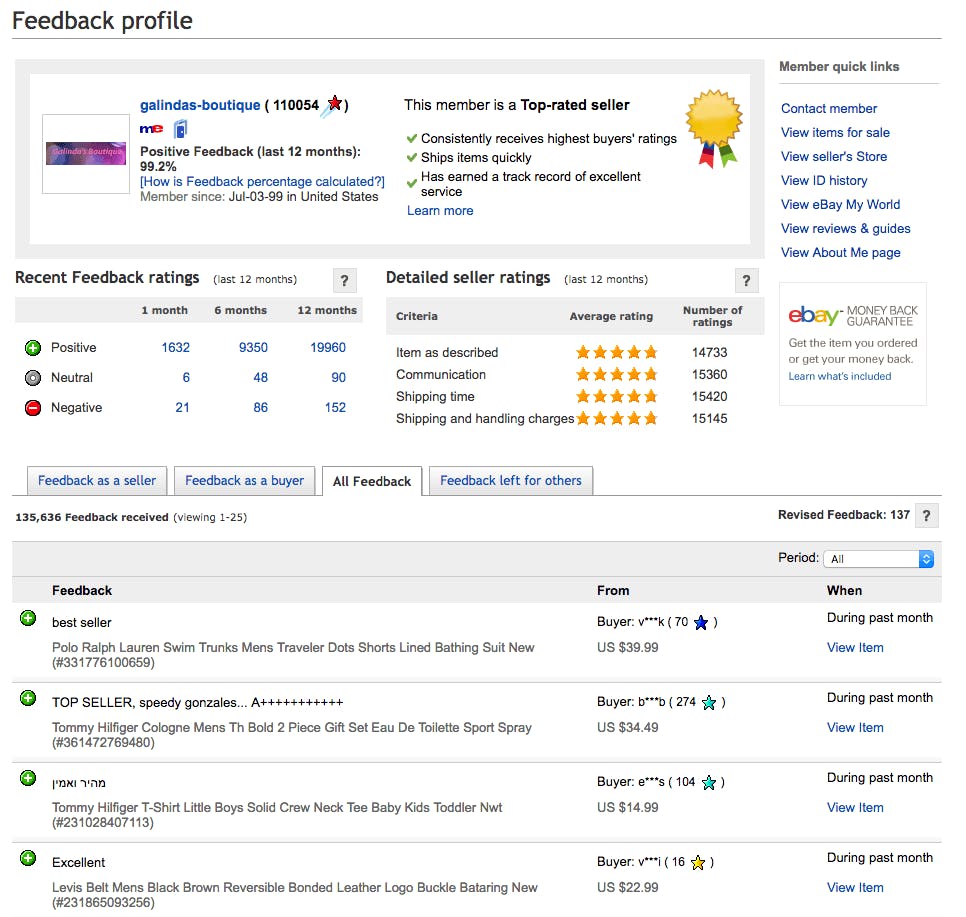
Typically, a review consists of a numeric evaluation (a one to five-star rating or a simple thumbs up or down) and a text section. This captures both the quantitative and the qualitative aspects of the review. In some cases, you might want to ask the parties to give a numeric rating for different aspects of the transaction. This is especially helpful in large marketplaces with lots of providers and reviews since it helps providers differentiate their offerings.
For example, Airbnb asks the guest to rate things like communication, cleanliness, and location separately, which all add up to the final rating. A guest might be really friendly and timely but create a huge mess. An appropriate rating helps other hosts know what to expect without labeling the guest as a malicious actor.
eBay's system has been studied extensively, and researchers have found that sellers with higher reputation scores are able to charge higher prices for their products. Maintaining a good reputation is vital to them. Today, almost all popular marketplaces use similar reputation systems.
There's an additional benefit to using such systems: they discourage users from bypassing the marketplace's payment system.
Review data is often used to weed out bad apples entirely. Uber and Lyft ask both drivers and passengers to rate their experience at the end of a ride. These companies remove poorly rated drivers (with an average of 3 stars or less) from the system, removing the need for passengers to read reviews before getting a ride. BlaBlaCar also uses a similar mechanism. Sharetribe CEO Juho Makkonen noticed this after having a bad experience with a BlaBlaCar driver. Two weeks after the incident, Juho tried to leave a negative rating for the driver, but it was too late: the driver had already been removed from the platform due to negative ratings from others.
Although implementing a reputation system fosters trust, research shows that these systems rarely build sufficient trust or provide adequate safety on their own. As Andrei Hagiu and Simon Rothman note in Harvard Business Review: "Many online rating & review systems suffer from significant biases: People who voluntarily rate a product or service tend to be either very happy or very unhappy with it. This severely undermines the value of the information provided and skews results."
Besides bias, another problem with reputation is that even when it is transaction-based, you can still fake it. For instance, you could create several fake accounts and have them conduct transactions with each other and leave positive reviews.
Feedback extortion is another common problem in popular marketplaces: "If you're going to give me a bad review, I'll give you one as well." Extortion can also be used to get additional value from the other party. Airbnb tackles extortion by using a "double-blind" review system: both parties have 14 days to leave the review, after which both reviews are published simultaneously. Once the reviews are published, they can no longer be altered. Airbnb also has an extortion policy that specifically bans this type of behavior. eBay has a similar rule in place. However, extortion still remains an issue on Airbnb. You can find a detailed definition of feedback extortion along with other important marketplace terms in Sharetribe's marketplace glossary.
To summarize, while reputation systems play an essential role in creating trust between marketplace users, they should not be trusted blindly. They offer one data point that, as Jessica Tiwari, former VP of Product Management at Upwork, points out, should be complemented with other mechanisms.
Not all of your users' fears are related to the person they are transacting with. They also need to trust your platform with their money and information. This challenge is particularly big for new marketplace businesses—ones without a proven brand and track record. We will now review the most common strategies to make your platform appear more trustworthy in the eyes of your users.
I will never forget the experience of using Airbnb for the first time. It had the most unique, beautiful, and functional design of all the marketplaces I knew at the time. The user experience was stunning. This was no accident: founders Brian Chesky and Joe Gebbia were both designers. From the beginning, they had designed for trust. As Gebbia notes in his TED talk:
– We bet our whole company on the hope that, with the right design, people will be willing to overcome the stranger-danger bias.
Anand Iyer, former CEO and Founder of Trusted, explains that the first impression is a key mechanism in fostering trust:
– By baking trustworthiness into users' very first touchpoint with your product, you not only build a solid relationship between them and your brand but with each other as they exchange goods and services.
One facet of design that helps build trust is polishing the small details. Make sure that the grammar of your copy is correct and that your visuals look professional. Nothing screams "scam" more loudly than a quickly built platform with bad copy, obvious stock photos, and awkward design choices.
A great way to build trust is to use social proof on your landing page. BlaBlaCar does this by highlighting positive user testimonials near the top of the page. To learn more about building a good first impression, check out an earlier chapter on communicating your value proposition.
As we have mentioned multiple times in previous chapters of this guide, it is important to focus on quality over quantity, especially during the early days of your marketplace. Be exclusive and hand-pick only the best providers, products, and services. When you can no longer monitor everything manually, content moderation tools can be helpful.
I recently interviewed Joel Serra, Head of Launch at EatWith, a marketplace for home-cooked dinner events. He explained that for the first year and a half, EatWith manually curated every event. They knew the attendees and the mix of gender, age, and languages for each event. It was not scalable, but because of this approach, they were able to ensure a great experience for their early users and build their reputation as a trustworthy platform.
One way to invest in the quality of the initial content is to eat your own dog food and purchase regularly from your own providers. The founders of Airbnb did exactly this in their early days. Brian Chesky even gave up his apartment and lived entirely off of Airbnb for a while. By doing this, he came to understand the little details that make or break the customer experience, and Airbnb was able to instruct the hosts to pay attention to these.
When you are crafting your value proposition, be extremely mindful of only promising things you know you can keep. If you fail to deliver on your promise, your reputation and trustworthiness will suffer.
Airbnb experienced this first-hand when a guest ransacked an Airbnb host's apartment in 2011. The host wrote a long blog post about the incident, detailing how Airbnb had betrayed her specifically because it promised that the site and its users could be trusted. This was in stark contrast to Craigslist, a site she had previously used, which specifically advised users to use it at their own risk. The blog post and the hype that followed caused lots of trouble for Airbnb—trouble it could have avoided by being clearer in its communication.
Many labor marketplaces like Uber and TaskRabbit guarantee a high service level. This also means they need to take lots of action to act on that promise. Oisin Hanrahan, CEO of labor marketplace Handy, says that if their providers do not show up on time, the customers' trust in the platform is shattered.
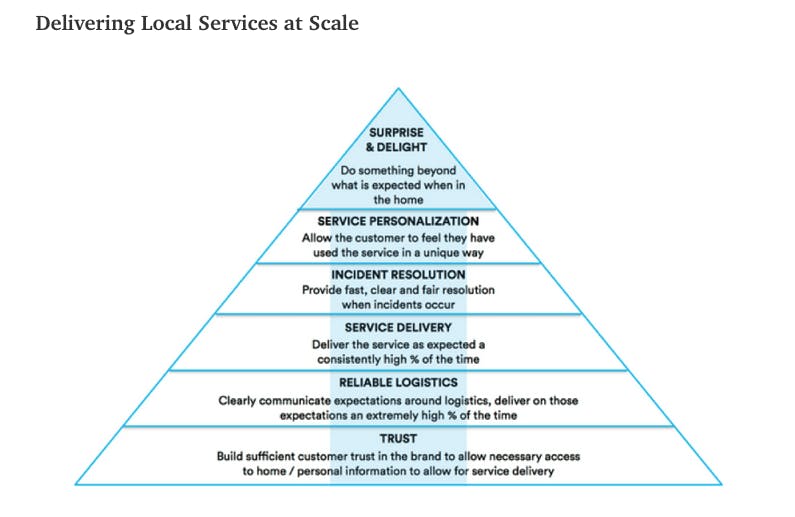
When Airbnb was hit with the ransacking issue, they reacted quickly. Brian Chesky wrote a post explaining all the actions they immediately took to ensure such a case would never happen again. Airbnb's customer service team was alert, and the host whose place was ransacked made a point to stress that their level of support had been great. This reaction helped Airbnb survive the crisis.
Eventually, something will go wrong. You cannot prevent all negative events, but you can mitigate the damage by reacting to them in a fast and transparent way. Apologize. Tell the customer you made a mistake and will do everything in your power to make sure it will not happen again. Explain the concrete changes you plan on making and then follow through with them. Refund the customer or provider who experienced the problem and maybe even offer them extra credits.
When shit hits the fan, you might actually end up better off than when you started. Providing a great customer (or provider) experience in such a situation can turn a bad situation around and improve the reputation of your platform.
It is good to keep in mind that your users do not always need to really trust each other. It might be enough if they can trust the experience: if they partake in a transaction, nothing too bad will happen, even if the other party is unreliable. In this section, we are going to take a look at some ways to reduce the perceived risk without actually building trust.
Guaranteeing a smooth and trustworthy transaction process and covering for situations where something goes wrong is a great way to reduce user risk. This can be the most important value proposition of a marketplace business and a great way to prevent platform leakage.
The best way to do this is to provide a frictionless and secure marketplace payments. It can be coupled with things like insurance, refundable deposits, guarantees, or buyer and seller protection. A reliable payment flow also reduces the risk of users taking payments off your platform, where you have fewer possibilities to protect them from fraud.
An interesting technological development that might affect the way marketplace transactions happen in the future is the emergence of the blockchain, a distributed, trusted database that already powers plenty of applications. The most well-known of them is the digital currency Bitcoin. Bitcoin allows people to transact with each other online in a secure way without the help of intermediaries such as banks or credit card companies.
As LinkedIn founder and prominent investor Reid Hoffman writes: "The blockchain creates the possibility of trustless trust. Parties no longer need to know or trust each other to participate in exchanges of value with absolute assurance and no intermediaries." Thanks to the distributed nature of the blockchain, there is no way to commit credit card fraud or other types of fraudulent transactions. This means I do not need to trust the other party at all because I know that a transaction with them will happen without a hitch.
Blockchain development is still in its infancy, and it is not yet very practical for layman use. However, we do expect the development to be fast in the coming years.
Now that you have learned ways to foster trust and safety, it is time to put them into practice. We will again focus on building a personal trainer marketplace, the imaginary example marketplace from previous chapters.
You start off by defining clear rules for both customers and trainers. You write a cancellation policy, instructions on what to do if the level of service is not adequate, and a guide on how to offer great customer service as a trainer. You tweak a few pages on your marketplace to ensure every user will read these guidelines.
To ensure a high-quality supply, you only accept trainers who have an official personal training license as your providers. You manually vet each provider and ask them to submit this information. You also tell your customers that every provider has been vetted and hand-picked.
You allow each user (both customers and providers) to create their own profile page where they can add their name, photo, and a description of themselves. You encourage everyone to use their real name. You also allow providers to add videos to describe their services. This helps build an even better connection between them and their potential customers before a transaction. You check each profile to make sure all the details are in order and even check the text for grammatical errors.
You decide to add a messaging system to your site, allowing customers and providers to contact each other and exchange information before a transaction. This helps build a connection between them.
You also add a simple reputation system where both parties can rate each other. As your marketplace scales, you will allow the customers to rate several different aspects of each transaction: Was the trainer friendly? Did they know what they were doing? Did they arrive on time? If your providers constantly get bad reviews, you remove them from the platform.
To avoid last-minute cancellations, you offer a booking process where the customer can find the desired time slot and make the payment immediately. Since you have established a clear cancellation policy, customers who cancel at the last minute will not get their money back.
To protect customers, you offer a buyer protection program by using PayPal as your payment provider. You guarantee that if a provider is a no-show or provides bad service, the customer will get their money back. Eventually, when you scale, you plan on adding an insurance program that covers the medical treatment of customers who hurt themselves because of improper instructions from their trainers.
In this chapter, you learned why building a marketplace trust mechanism is vital to growing business. You need to build trust between your customers and providers and also help your users trust the platform itself. You are aware of methods to reduce the perceived risk of a marketplace without having to build trust.
The most important ways to build trust between your users are by creating rules, encouraging users to tell more about themselves, providing a messaging system between users, showing users how they are connected to each other, verifying their identities and backgrounds, and using a reputation system.
To encourage your users to trust your platform, you should offer a good first impression, curate your content, deliver what you promise, and address issues quickly and transparently.
You can reduce the perceived risks of your marketplace with frictionless online payments, insurance, and other provider protection measures, escrow, and other customer protection measures. In the future, blockchain technology can play a big part in creating "trustless trust".
Now that you have a growing base of users who trust each other, you are all set to scale.
You might also like...
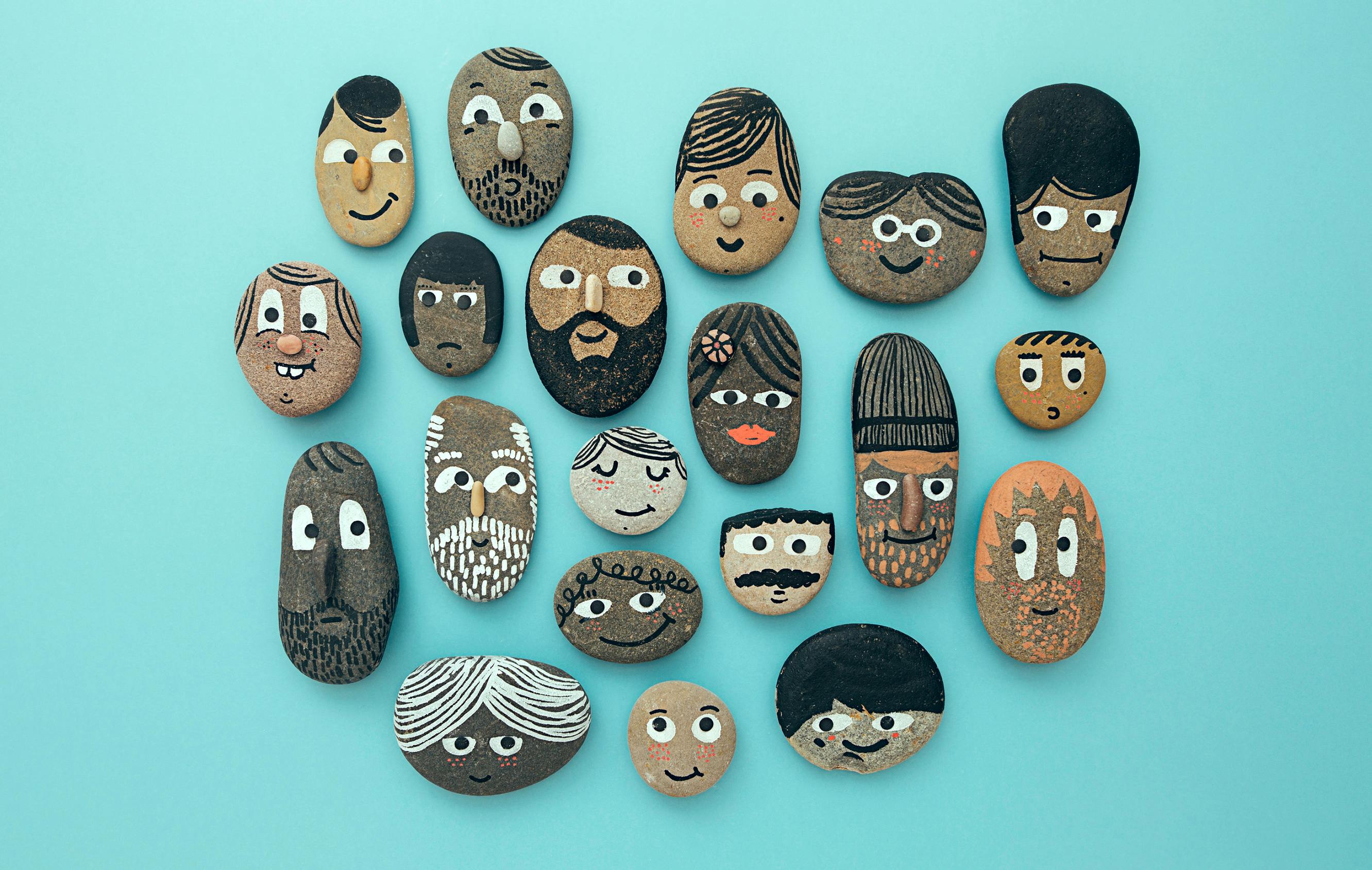
How to turn your marketplace into a community
Engage your best providers by turning them from users into community members.

How to build your marketplace supply
How to bring in the first, quality providers before your platform has any customers.

PaulCamper’s community-building playbook for marketplaces
PaulCamper's COO Julia Wadehn shares her best marketplace community-building strategies and explains how they have helped boost PaulCamper's growth.
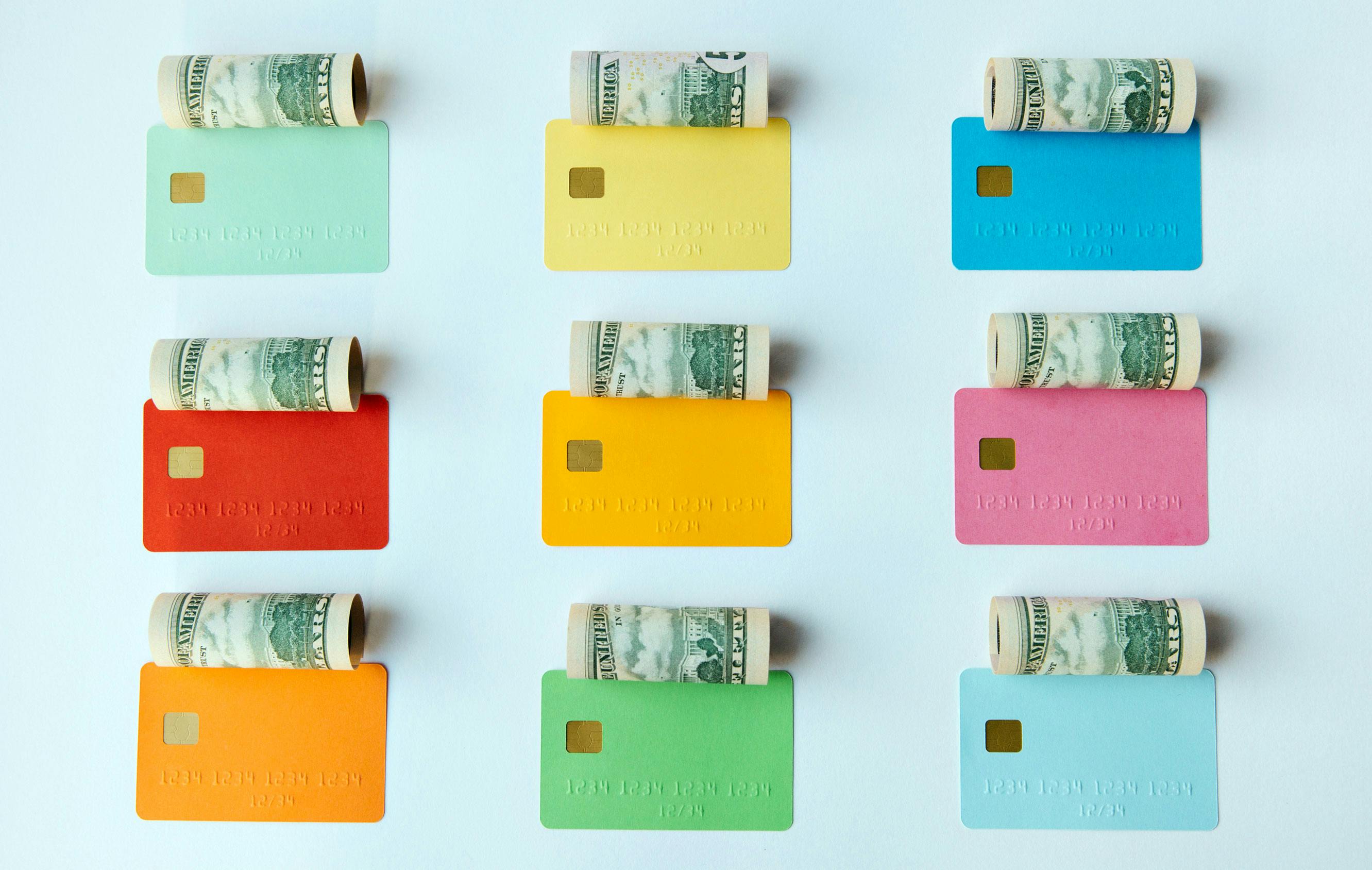
Marketplace pricing: How to set the right take rate
The right marketplace pricing level depends on many different factors internal or external to your marketplace. Here's what you should consider to find the optimal pricing level for your marketplace.
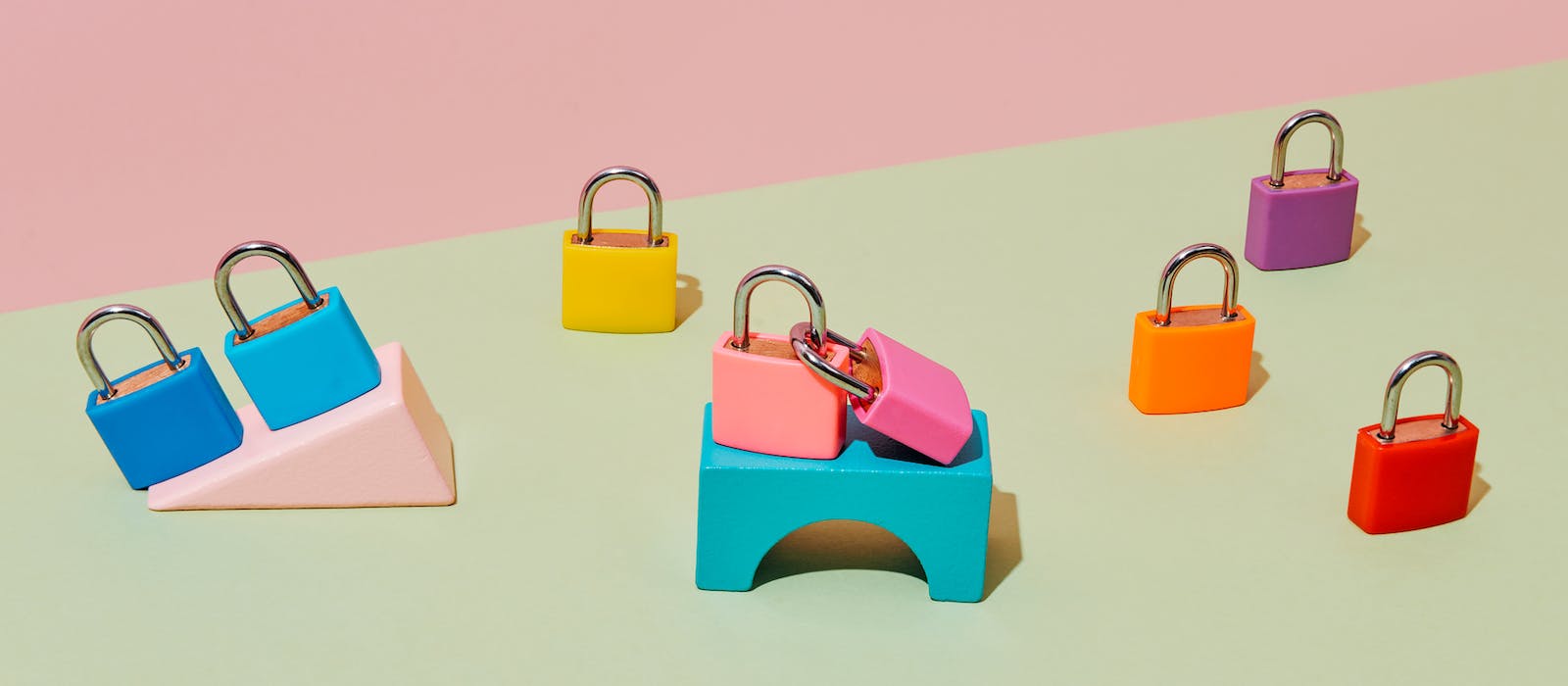
Customer data protection: How online marketplaces can secure private customer information
To operate a marketplace, you need to collect and store a lot of personal information about your users. Learn how to keep it safe and secure.
Start your 14-day free trial
Create a marketplace today!
- Launch quickly, without coding
- Extend infinitely
- Scale to any size
No credit card required
